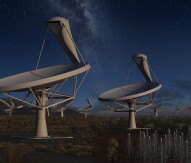
Sun could emit superflare
A study has suggested that the Sun could superflare, following new research into stellar flaring.
The investigation by the UK’s University of Warwick and funded by the European Research Council has found a stellar superflare on a star observed by NASA’s Kepler space telescope with wave patterns similar to those that have been observed in solar flares from the Sun. Superflares are known to be thousands of times more powerful than those ever recorded on the Sun, and are frequently observed on some stars.
The binary star KIC9655129, located in the Milky Way, is known to superflare. The researchers suggest due to the similarities between the superflare on KIC9655129 and the Sun’s solar flares, the underlying physics of the flares might be the same, supporting the idea that the Sun could also produce a superflare.
Typical solar flares can have energies equivalent to a 100 million megaton bombs, but a superflare on the Sun could release energy equivalent to a 100 billion megaton bombs. Experts warn that if the Sun were to superflare the Earth’s communications and energy systems could be at serious risk of failing.
Commenting, lead researcher Chloë Pugh explained: “Stars very similar to the Sun have been observed to produce enormous flares, called superflares.
“Solar flares are commonly observed to consist of a series of regularly occurring pulses. Often these pulsations resemble waves, with a wavelength that relates to various properties of the region of the Sun that is producing the flare. The study of waves such as these is referred to as coronal seismology.
“Occasionally solar flares contain multiple waves superimposed on top of one another, which can easily be explained by coronal seismology. We have found evidence for multiple waves, or multiple periodicities, in a stellar superflare, and the properties of these waves are consistent with those that occur in solar flares.”
The researcher adds that the situation required for a Sun superflare “are extremely unlikely to occur”, in line with earlier examinations.
Full details of the study can be found in The Astrophysical Journal Letters.




